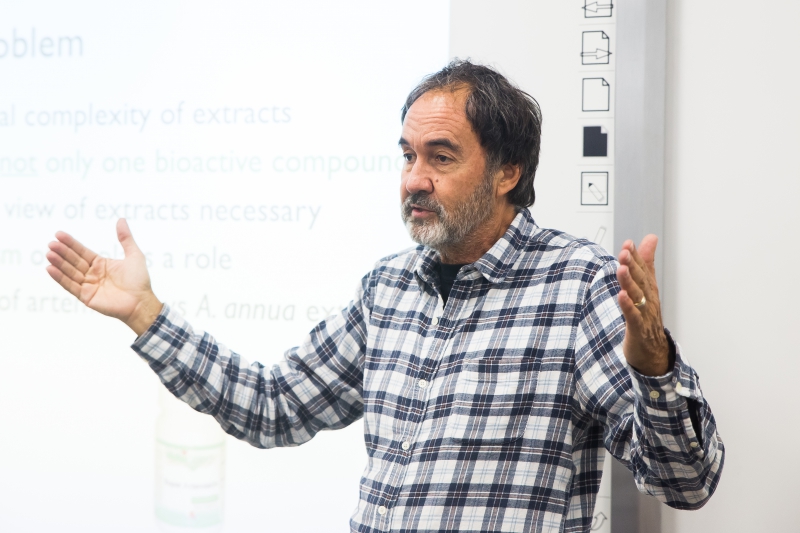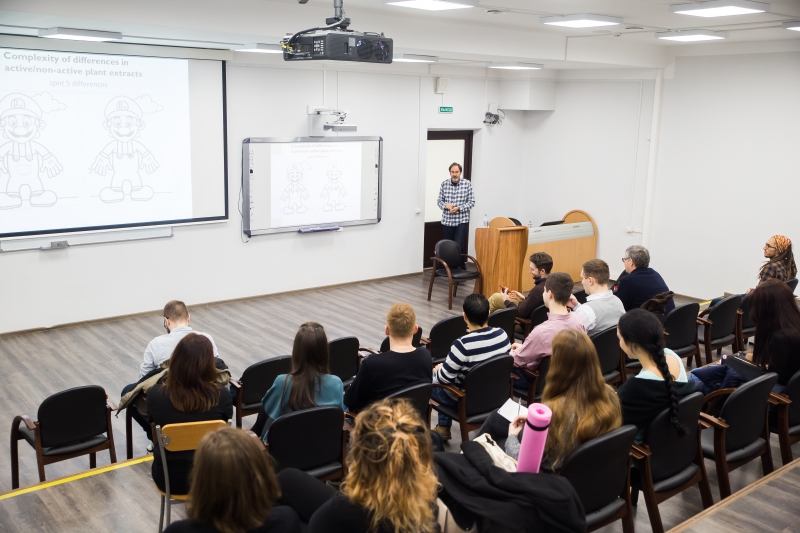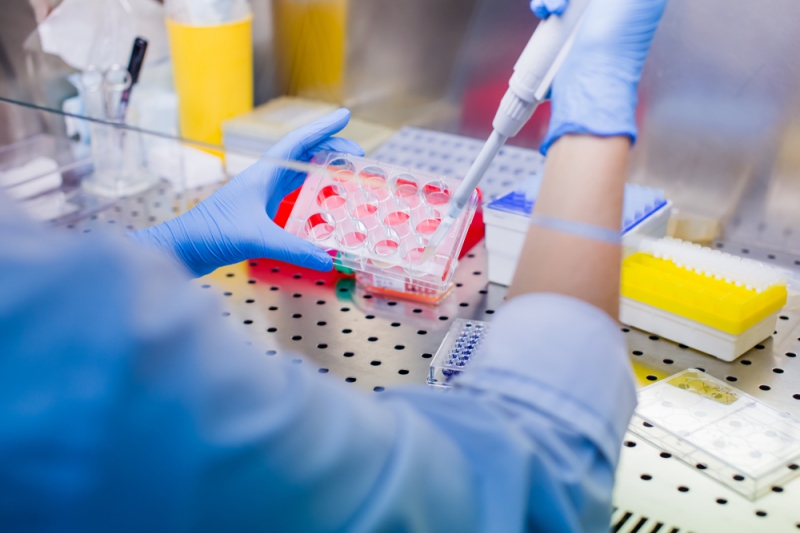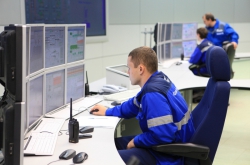Scientists from ITMO University and the University of Pretoria focus on solving similar tasks in the field of studying effective biologically active substances. By using modern research methods and hi-tech equipment, substances can be transferred into a more stable form and used in the fields of biotechnology and pharmaceuticals.
For example, the staff of Biotechnologies of the Third Millennium International Research Center work on analyzing biomarkers that can be used for diagnosing endometriosis in women at the early stages of the disease.
When studying different biological objects, scientists acquire massive amounts of data. Professor Jacobus Johannes Marion Meyer from the University of Pretoria and his graduate assistant Sewes Alberts told ITMO students about the issues of analyzing and working with such data. They shared their experience of processing and analyzing information with the help of the SIMCA software that helps group data on biological materials and analyze them by using metabolomics methods.

Metabolomics is a rapidly developing field of science that focuses on comparative analysis of chemical objects. The traditional approach to analyzing metabolites by means of analytical chemistry focused on qualitative and quantitative analysis of particular groups of substances. Still, today’s development level of analytical equipment, methods and software offers an opportunity to compare samples with regard to hundreds and even thousands of metabolites.
“Let’s say that when selling wine, we learn that one of the batches is either bitter or downright poisonous. So, how can we learn which of the components is to blame? Oftentimes, it’s really hard, as different chemical substances and their combination can be behind the undesired effect. At the same time, both customers and manufacturers don’t care about why the wine got bad: what’s important is how to identify which is good and which is not. This is what metabolic analysis can be used for. Chemists work with essences of various substances of plant and animal origin, and have to deal with complex samples and large numbers of components. Oftentimes, they have no need for measuring the concentration of different components, and sometimes this proves downright unattainable. Metabolomics methods make it possible to compare concentration profiles of different samples and break them into different groups. For example, safe and unsafe ones,” explains Jacobus Johannes Marion Meyer.
The efficiency of metabolic analysis is substantiated by the history of developing antimalarial agents. Scientists spent lots of time on searching for a cure until they found artemisinin, a substance that can be extracted from plants, for example artemisia annua. It turned out that the efficiency of artemisinin that’s produced as a mixture of biologically active substances extracted from natural components is 45 times higher than that of a pure single-component antimalarial agent. Thus, though finding an effective biologically active substance is important, studying effective combinations of biologically active substances is more preferable from a scientific standpoint. Thanks to evolution, there are whole families of every plant. The differences between their components are often minimal, but knowledge of them can help create drugs with maximum efficiency.

According to Jacobus Johannes Marion Meyer, metabolic analysis helps test the quality of drugs and facilitate the growth of the pharmaceutical market: every year, it grows by 5-18%. Export of Chinese preparations amounts to 348 million dollars; the USA import preparations for 220 millions a year. In such conditions, consumers expect good quality control. Be it a preparation from the south of Russia, China or Spain, they want equal quality in every country.
Today, there exist four approaches to metabolic analysis:
-
comprehensive metabolic analysis: qualitative and quantitative analysis of all metabolites, which is still impossible due to technical restrictions;
-
metabolic dactylography: classification of a sample using express analysis, used for testing whether the concentration of a substance is equal in several analyses;
-
metabolic profiling: quantitative specification of groups of compounds;
-
targeted metabolic analysis: quantitative specification of molecules.
Today, scientists mostly work with an experimental methodology. In order to conduct a metabolic analysis, you have to collect and upload all data on a substance. Let’s say you’re working with grapes: it will be essential to learn when they were gathered, in what weather, what the local soil was like and so on.

Naturally, this leads to the issue of transforming information into a digital format, i.e. something that software can comprehend. Still, such a file will represent a great number of intensities at different points in time. In most cases of measuring concentration, we conduct integration and get the peak areas. In order to analyze a preparation by using mathematical statistics, we have to measure intensity at particular intervals. As a result, we get a matrix of extracts that can be used to compare various substances.
Other applications of metabolic analysis
According to Jacobus Johannes Marion Meyer, metabolic analysis can be used in not just quality control and working with medical preparations. For example, In 2012, a vast area of the Pacific Ocean near Florida suffered from an oil spill. The source of it was unclear, so it was impossible to tell who was to be made responsible for cleaning the shores. Scientists came up with a solution: they took a sample of the oil and compared it to biomarkers of oils registered in the common system. This helped identify the company responsible for the spillage.

“There is one more possible application of metabolic analysis that we might witness in the future. It has to do with increasing stress resilience in plants. As a result of the evolutionary development, particular plants adjusted to particular environments. Southern plants are good at enduring heat but can’t stand the cold, and vice versa. If a plant is placed in an environment that they are not accustomed to, they experience stress from temperature or moisture levels. Metabolic analysis can be used to tell which changes emerge in cells due to such stress, study them and reprogram genes with the help of synthetic biology and biotechnologies. As a result, we can create plants that are resilient to stress,” concludes Sewes Alberts.





